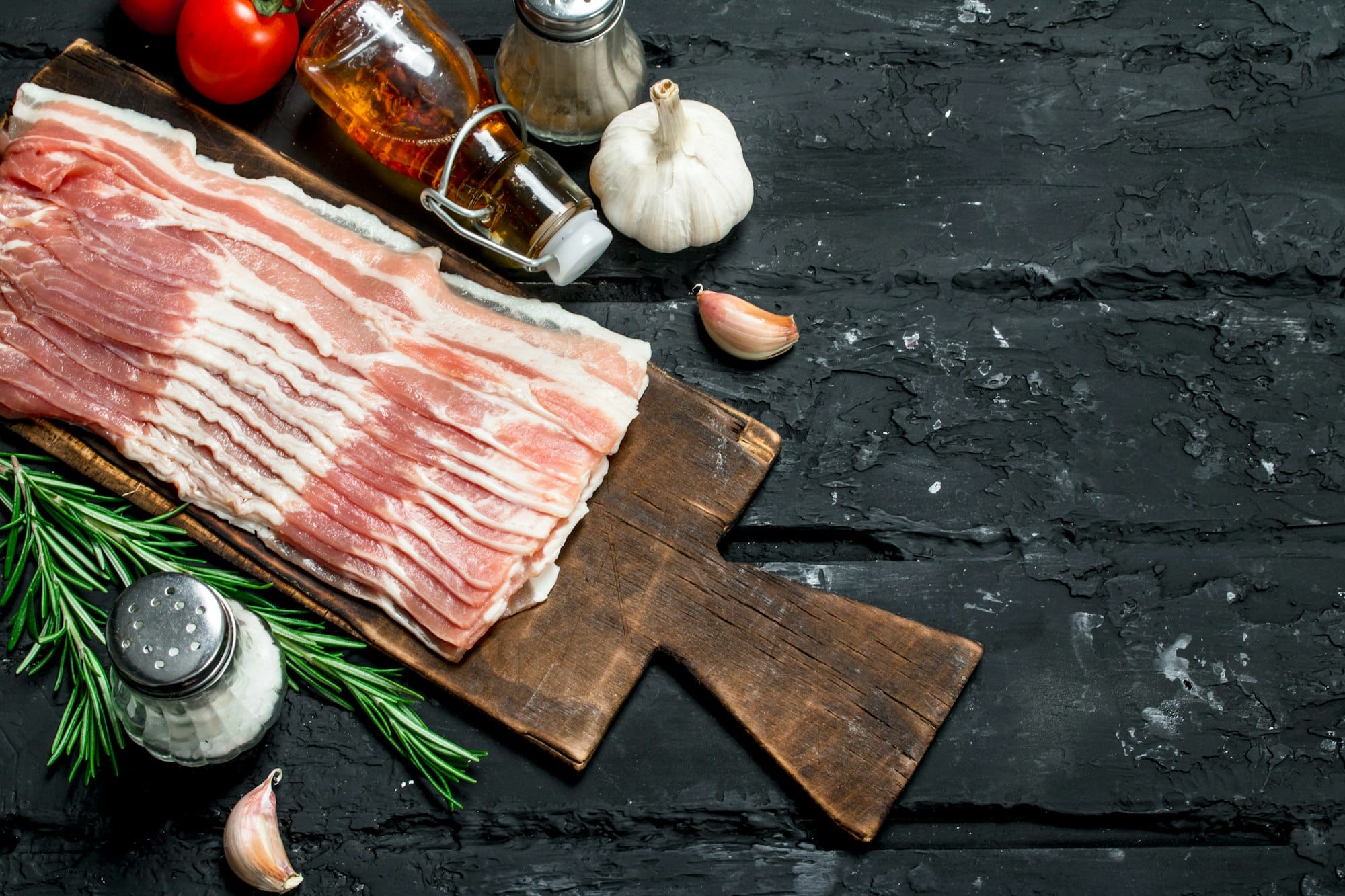If you’re a food enthusiast with a penchant for pork-based products, you’ve probably pondered the idea of making your own bacon. It may seem like a daunting task, but with the right tools and a little bit of patience, you can transform a pork belly into a delicious, homemade delicacy. In this comprehensive guide, you’ll be walked through the fascinating process of curing and smoking bacon at home.
The Art of Curing Bacon
Before we dive into the smoking process, we need to address the curing stage. Curing is essentially a method of preserving meat to enhance its flavor and extend its shelf life. This is accomplished by applying a mix of salt, sugar, and curing salt to the pork belly.
Also to see : How to Create a Luxurious Chocolate Hazelnut Spread from Scratch?
The Main Ingredients
To cure your pork belly, you’ll need the right ingredients. The key to a successful cure is balance. You don’t want to overdo the salt, as it will overpower the rich, savory flavor of the pork. The same goes for the sugar, which should nicely complement the saltiness without turning your bacon into a dessert.
The curing salt, also known as Prague powder or pink salt, is a mixture of sodium chloride and sodium nitrite. It’s responsible for killing bacteria and giving bacon its distinctive pink hue. However, it’s highly potent, so a little goes a long way.
Also to read : What’s the Best Method to Brew an Authentic Turkish Coffee at Home?
The Curing Process
The curing process is quite simple, but it requires time. Start by applying your curing mixture evenly over the pork belly. Make sure every inch is covered. Then, place the meat into a zip-top bag and refrigerate it. The ideal temperature for curing is between 36 and 40 degrees Fahrenheit.
The length of time you cure the pork belly will depend on its thickness. A good rule of thumb is to allow one day of curing for every 1/4 inch of thickness. This ensures that the cure penetrates all the way to the center of the meat. After the curing time has elapsed, rinse off the cure under cold water.
The Art of Smoking Bacon
Once the curing process is complete, it’s time to smoke your pork belly. This will infuse it with a deep, smoky flavor that’s a trademark of classic bacon.
Preparing Your Bacon for Smoking
Before you begin smoking, you’ll need to dry your cured pork belly. Pat it dry with paper towels, then leave it out at room temperature for about an hour to form a pellicle. This thin layer of proteins will allow the smoke to adhere better to the meat, leading to a more intense flavor.
The Smoking Process
The smoking process is a delicate balance of time, temperature, and smoke. To smoke your bacon, you’ll need a smoker. Charcoal, electric, and gas smokers can all deliver excellent results, so choose one that suits your preferences.
The optimal smoking temperature for bacon is between 200 and 225 degrees Fahrenheit. This low and slow approach allows the meat to absorb the smoke without drying out. As for the type of wood, hickory and applewood are popular choices that impart a classic bacon flavor.
The smoking time will depend on the thickness of your pork belly and the temperature of your smoker. However, you’re aiming for an internal temperature of 150 degrees Fahrenheit. This ensures that your bacon is fully cooked and ready to be sliced and fried up for breakfast.
The Joy of Homemade Bacon
The process of curing and smoking bacon at home may seem like a long journey, but the end result is worth it. When you bite into your homemade bacon, you’ll taste the fruit of your labor in every salty, smoky, savory bite. Moreover, you’ll have gained a deeper appreciation for this beloved breakfast staple.
By mastering the arts of curing and smoking, you can experiment with different flavors and techniques. Try adding herbs and spices to your cure, or smoking with different types of wood. The possibilities are endless when you’re the artisan.
A Few More Tips for Success
While curing and smoking bacon at home is fairly straightforward, there are a few additional tips that can help ensure success. First, always use fresh, high-quality pork belly. This is the foundation of your bacon, and using subpar meat will result in subpar bacon.
Second, be patient. Curing and smoking both take time, and rushing either process will compromise the flavor and texture of your bacon. Finally, remember to always cook your homemade bacon to an internal temperature of 160 degrees Fahrenheit before consuming. This ensures that any potential harmful bacteria are destroyed.
So, are you ready to embark on the journey to homemade bacon? With this guide, you’re well-equipped to take on the task. Happy curing and smoking!
Flavors and Spices in the Curing Mix
In your journey to create your own preserved pork belly, the choice of flavors and spices can make a significant difference in the final product. The basic cure of salt, sugar, and curing salt provides a solid foundation, but additional ingredients can elevate the taste of your bacon to a whole new level.
Additional Ingredients
Flavoring your cure mix with various herbs, spices, or even maple syrup can add depth and complexity to your bacon’s taste. Some popular additions include black pepper, thyme, garlic, cinnamon, and brown sugar. The important thing is to remember that these should be used in moderation to avoid overpowering the primary taste of the bacon.
Another popular addition is liquid smoke, which gives your bacon a smoky flavor even if you’re not able to actually smoke it. Liquid smoke is a concentrated product made from actual smoke, providing the smoky aroma without the need for a smoker.
Applying the Cured Bacon Mixture
When applying your curing mixture, make sure it’s well integrated into the pork belly. Using a clean, dry hand, rub the mixture into every nook and cranny, ensuring an even coating. Remember, the goal here is to allow the cure bacon mixture to penetrate deeply into the meat, affecting every bite with its flavor-boosting powers.
Cold Smoking Your Bacon
For those who wish to take their homemade bacon to the next level, cold smoking is an exciting option. Unlike hot smoking, which cooks the meat as it infuses it with smoke, cold smoking imparts flavor without cooking the meat.
Cold Smoking Process
Cold smoking requires temperatures below 100 degrees Fahrenheit, far lower than the 200-225 degrees recommended for hot smoking. This means the process takes longer—often up to 24 hours—but the payoff is a product with a uniquely smoky flavor that’s hard to match.
When cold smoking, the preferred wood chips are often different than those used in hot smoking. Fruit woods like apple and cherry are popular, but try experimenting with alder, maple, or mesquite for a different flavor profile.
After the Smoke
Once the smoking process is complete, your bacon should be left to rest in the fridge for at least a day before slicing and cooking. This allows the smoke flavor to fully permeate the meat, leading to even more delicious results.
In Conclusion
Creating your own homemade bacon is a rewarding journey that allows you to explore your culinary creativity. From the curing process, where you balance the flavors of salt, sugar, and Prague powder, to the smoking stage, where you infuse your pork belly with your choice of wood smoke, every step offers opportunities for customization and experimentation.
Remember the important steps: selecting a high-quality pork belly, crafting a well-balanced cure mix, patiently allowing for sufficient curing time, and smoking your cured bacon to the perfect internal temperature. With these steps, you’re well on your way to crafting deliciously savory, perfectly smoky, and wonderfully satisfying bacon, right in your own kitchen.
So pull out that pork belly, and start your adventure in the world of bacon curing and smoking today. The resulting homemade bacon will surely make the process worth it. Happy bacon-making!











